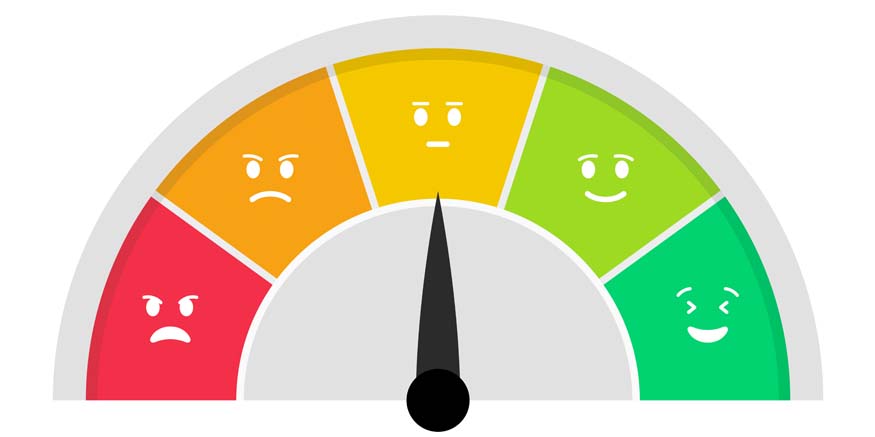The Mood Meter – A Key to Unlocking Your Child’s Emotional Intelligence

A child goes through a wide range of emotions every day, just like we do. However, unlike adults, young children do not have the ability to understand what they are feeling, or how to communicate these emotions to other people. They need to be taught how to recognise and manage their emotions.
Building Emotional intelligence in your child is fundamental for their growth and development. It helps build resilience in children, so that they are better able to work through challenges they face. It also helps develop the ability to navigate social situations, which is an important life skill.
As parents, it can be difficult when your child is experiencing strong emotions that you cannot identify. Very often, it is possible to misinterpret or even overlook their feelings. Fortunately, there are a number of tools like the Mood Meter to help you nurture Emotional Intelligence in your child.
- What Is Emotional Intelligence?
- The Mood Meter
- How it Works
- Yellow Zone (High Energy, High Pleasantness): Happiness, joy, enthusiasm,
- Red Zone (High Energy, Low Pleasantness): Anger, fear, tension, annoyance.
- Green Zone (Low Energy, High Pleasantness): Security, satisfaction, calmness, peace.
- Blue Zone (Low Energy, Low Pleasantness): Sadness, loneliness, disappointment.
- When to Use the Mood Meter
- Morning Check-In: Plot your child’s emotional state at the beginning of the day. Encourage them to ask themselves what exact emotion they are feeling.
- Midday Reflection: Check your child’s emotional state at lunch time. This check-in will assist you in knowing how their emotions have shifted and what may have caused them to alter.
- Evening Review: Finally, examine your child’s feelings at the end of the day. This will provide you with a concise picture of the emotional journey that your child has gone through during the day.
- Conclusion
Emotional Intelligence is at the core of Social Emotional Learning (SEL), which is one of the key development pillars of early childhood. It is the ability to interpret and control one’s own emotions. This not only helps children understand what they are feeling, but also enables them to deal with these emotions on their own – making them resilient.
Emotional Intelligence is also vital in developing social relationships – whether at schools and playgrounds in childhood, or with peers, colleagues, neighbours and communities as they grow. In fact, a number of research studies have conclusively shown that emotional intelligence is extremely crucial for a child to be successful in life.
Given the importance of Emotional Intelligence in daily life, it is no wonder that there are numerous studies undertaken to delve deeper into the nuances of the subject. There have also been a number of tools developed to help and promote social-emotional learning.
One such tool is the Mood Meter. Created by Marc Brackett of the esteemed Yale Center for Emotional Intelligence, the Mood Meter is a tool for people of all ages to become more emotionally self-aware, and be mindful of how emotions impact actions on a daily basis.
The Mood Meter is a particularly useful tool in building Emotional Intelligence in children, as it helps to identify emotions based on just two simple factors – what their energy levels are, and how pleasant they feel. In this way, the Mood Meter helps parents and teachers gauge the emotions of even very young children who are unable to articulate complex emotions.
The Mood Meter chart is a vibrantly coloured square, made up of 4 grids – Red, Yellow, Green and Blue. Each colour or zone represents levels of ‘Energy’ on the X axis, and ‘Pleasantness’ on the Y axis.
The process begins by asking a child how they feel on the ‘pleasantness’ scale, from low to high. Next, the child is asked to rate their energy levels from low to high. Parents or teachers can record this information on the Mood Meter chart, which shows the colour zone corresponding to the feelings of the child.
Each of the colour zones represent a larger set of feelings or emotions. A few examples are listed below:
The Mood Meter provides parents and teachers with insights into how a child is feeling. It is also very helpful in building Emotional Intelligence in children. The visual representation helps them connect the feelings they are experiencing with the names of emotions. Through the Mood Meter chart, they are able to learn about a wide range of nuanced emotions.
This process also provides excellent teaching moments to help and advise children on tactics and strategies to deal with the emotions they face. For example, if your child is experiencing emotions in the Red zone, you can ask them to take a deep breath, talk to a friend, write in their journal, or take a walk outside to clear their thoughts. Similarly, if your child is experiencing emotions in the Blue zone, you can suggest listening to their favourite song, reading a book they like, or even playing a game with friends. In this way, your child can learn to manage their emotions, and become more confident and secure.
The Mood Meter chart can be used over a series of days to gauge how a child is feeling over longer periods of time, or as a daily emotional check-in. Here are a few easy ways to include the Mood Meter in your everyday schedule:
When using the Mood Meter over a longer period of time, you will be able to identify emerging patterns in your child’s emotions. Make sure you analyse the patterns and keep notes on events and occurrences that trigger strong emotional reactions.
The Mood Meter is a powerful tool for developing emotional intelligence. It empowers you with the knowledge you will need to recognise your child’s feelings, and the opportunity to turn emotional outbursts into teachable moments. In this way, you can boost your child’s Social Emotional Learning, and help them grow into happy, healthy young people.
Explore the comprehensive curriculum at Billabong High International School, where social-emotional learning is integral to our educational approach. Visit our website today to learn more about our programmes








